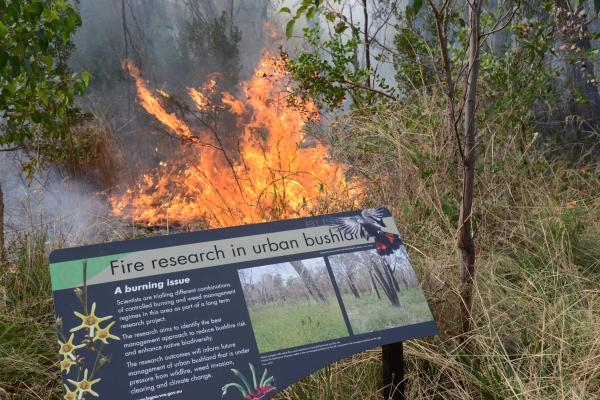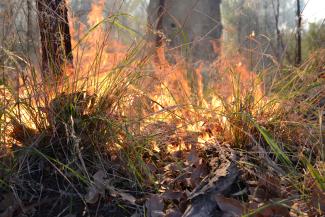Fire ecology research
It’s a hot topic and a tool that’s been used through the ages, but did you know Kings Park Science is also harnessing the power of fire to bring research to the next level?
Western Australia has many fire-prone native ecosystems and a rich diversity of species that have evolved over millennia with fire caused by lightning and burning by Traditional Owners. Over time, many fire regimes have been altered due to modern life, and this poses a challenge for land managers tasked with protecting conservation values, human life and property.
Kings Park: the role of fire in banksia urban conservation
Kings Park’s fire ecology research team seeks to understand how native species respond to fire, and how fire can be used as a tool to help conserve and manage native and restored ecosystems. Some of our research is carried out in the bushlands of Kings Park and Bold Park, providing the perfect living laboratory for conducting small to moderate scale experiments. Our projects examine suitable fire regimes (frequency, intensity, season) for native species, how fire interacts with invasive weed management, the impacts of fire in restored ecosystems, and what management actions can be used to reduce the harmful impacts of bushfire.

Kings Park scientists are using controlled experimental burns as part of their research in urban bushlands.
Did you know?
Fire can stimulate flowering, resprouting, seed germination and seedling recruitment in many native plant species.
Kings Park scientists are leading researchers on understanding how the heat and smoke from fires breaks the dormancy of seeds and stimulates germination.
Our researchers have a network of 178 plots across 5 urban bushland sites around Perth to monitor the effects of different fire and weed management approaches.
Temperatures up to 280 °C have been recorded in the soil during experimental burns at these sites.
Fire impacts on urban bushlands: burning questions
Fire can impact urban bushlands in several ways. It can be beneficial for native species, but it can also be detrimental in the way it interacts with climate change, invasive weeds and pests. Our fire research program in Kings Park and Bold Park allows for comparison between areas with different fire and weed management regimes to formulate adaptive bushland management strategies. Preliminary results show that when grassy weeds are present there is a strong benefit of using combined fire and weed management to control weeds, enhance native plant communities and reduce fuel loads.
Adapt or Perish: the impact of fire on the environment
From growing thicker bark to prolific post-fire seeding, Australian native plants use a variety of ecological strategies to cope with fire. However, repeated or especially short or long fire intervals, high severity or unseasonal fire can cause species decline. Our research aims to identify how different elements of the fire regime effect native plant populations in Banksia woodlands and South West forests. Outcomes of this research will help inform science-based ecosystem management and biodiversity conservation.
Restoring native ecosystems is a challenge in itself, but what happens when these new ecosystems experience fire? While native species have traits that allow them to cope with fire, restored ecosystems may not have the historical legacy of seed banks and mature plants to recover from. This will impact key ecological interactions such as pollination and seed dispersal, which are essential for a species to build resilience. We are working with industry partners to understand how the age of restoration sites affects the plant community response to fire in a post-sand mining landscape, which is important for managing restoration sites now and into the future.
